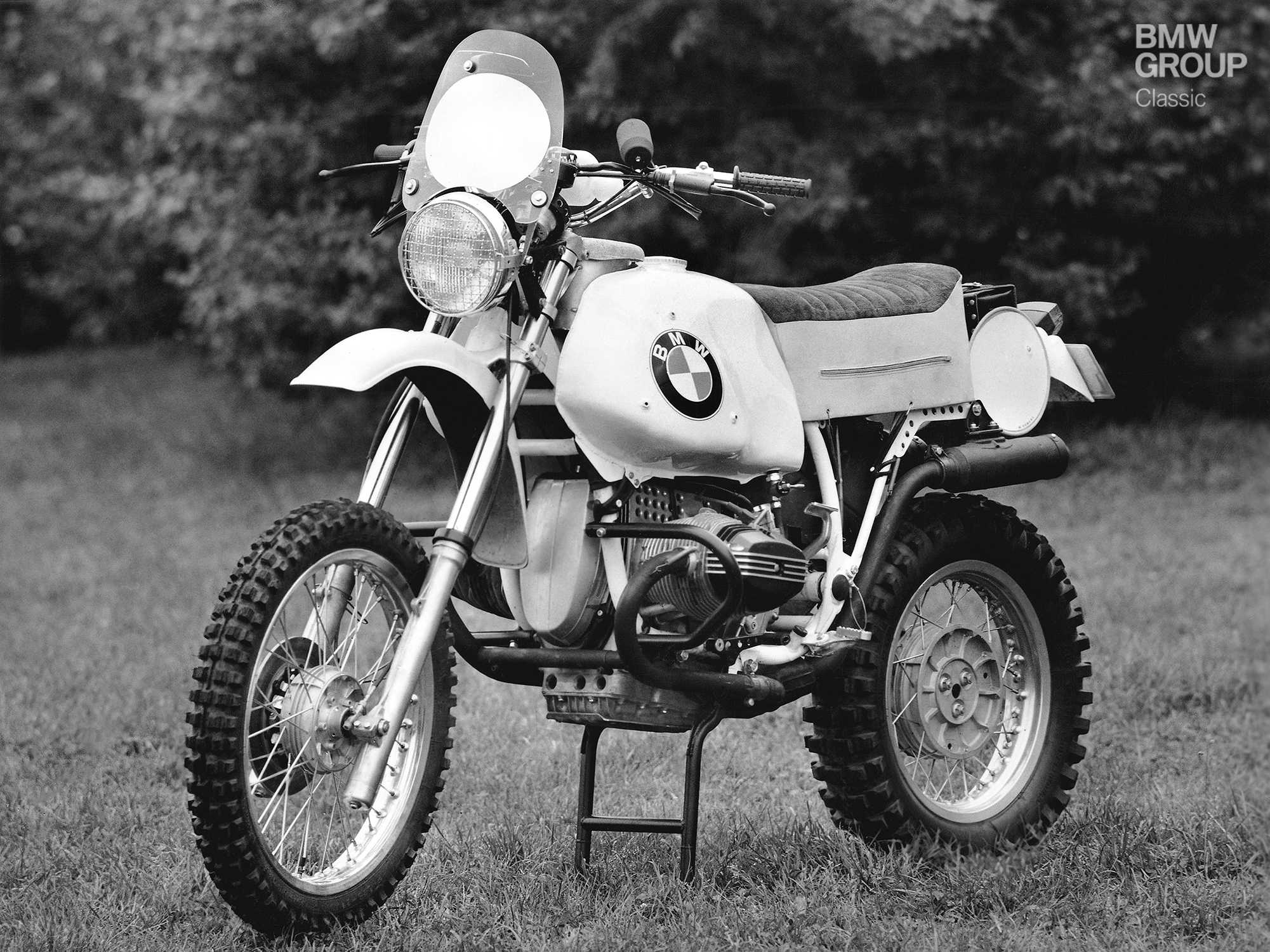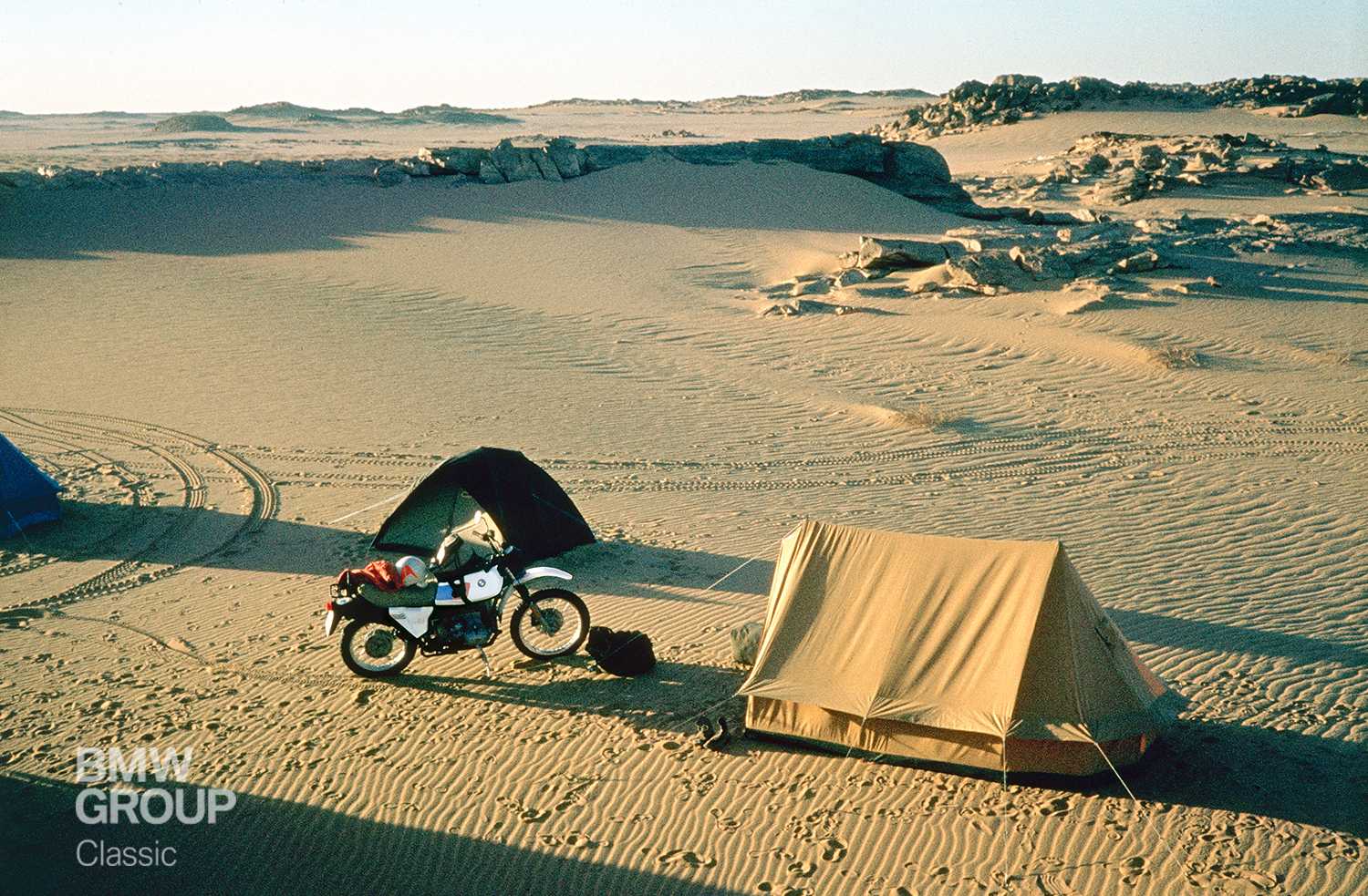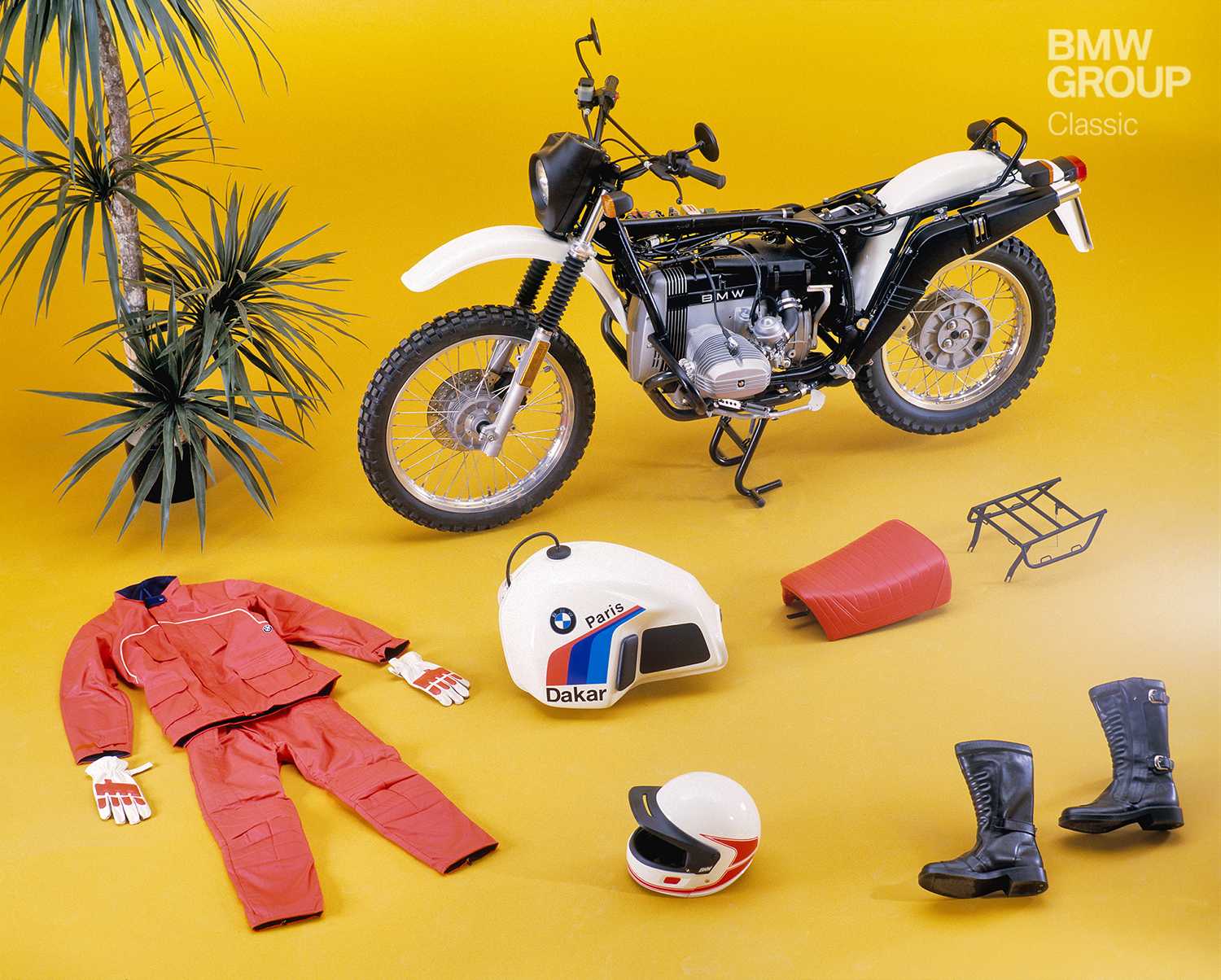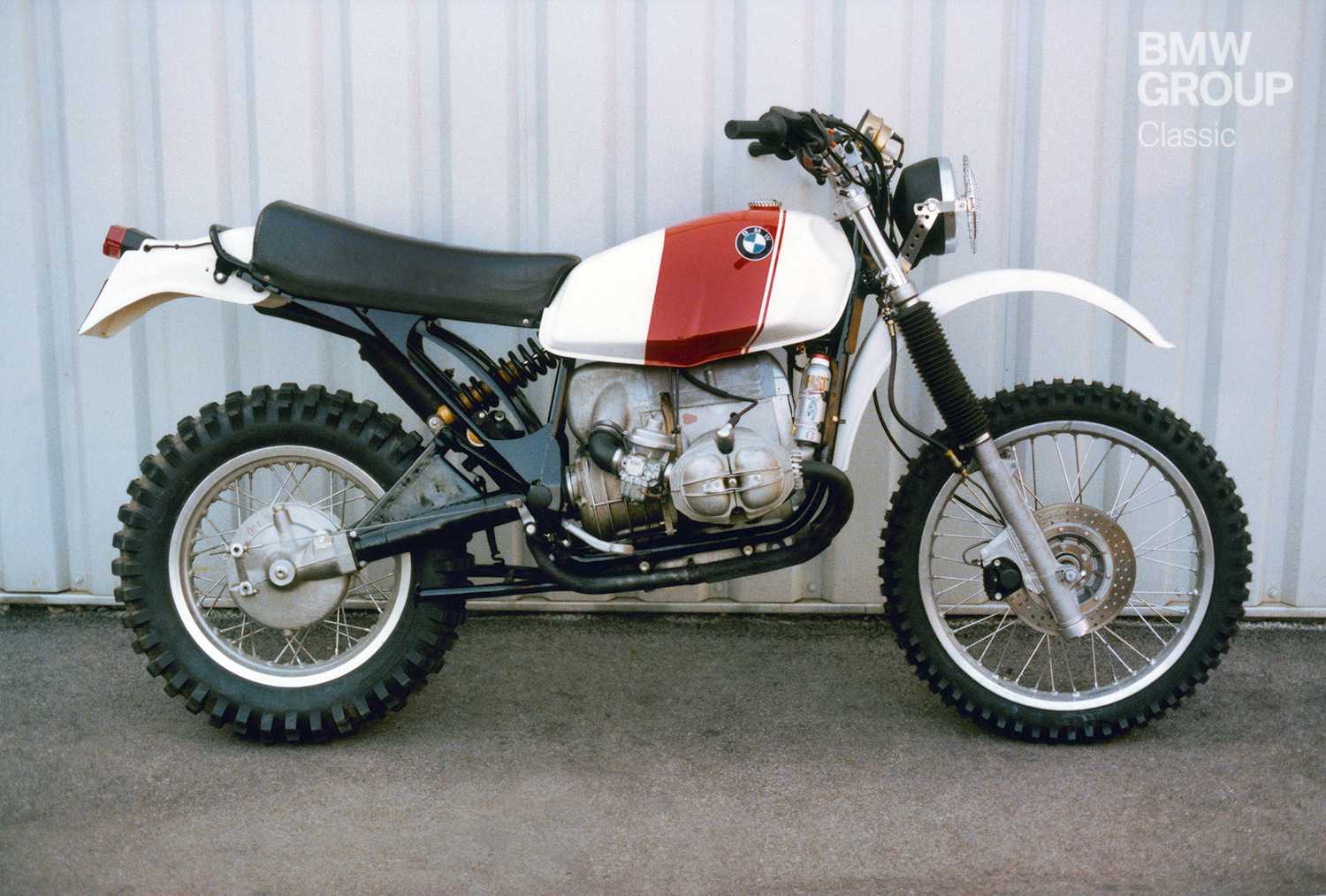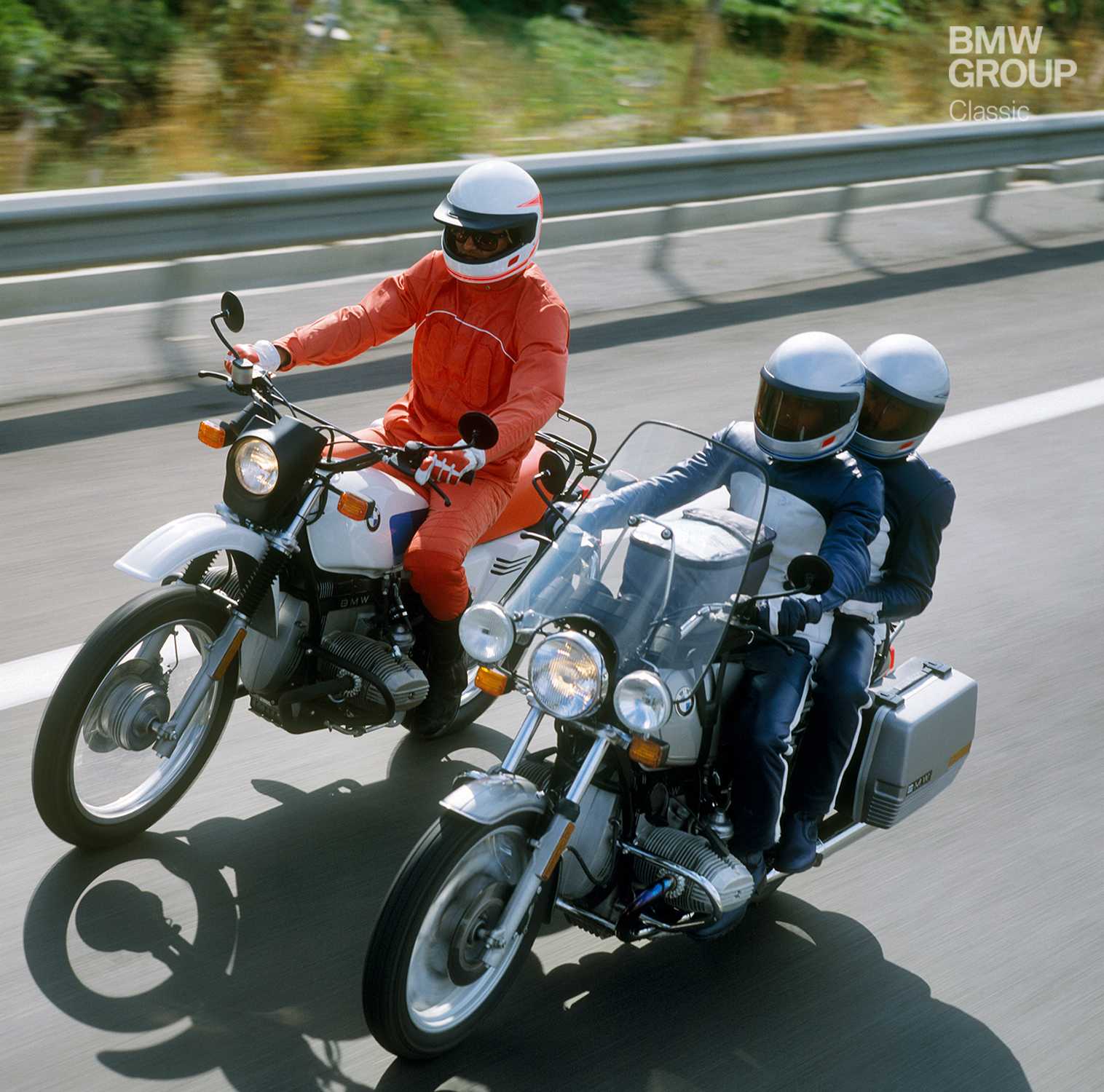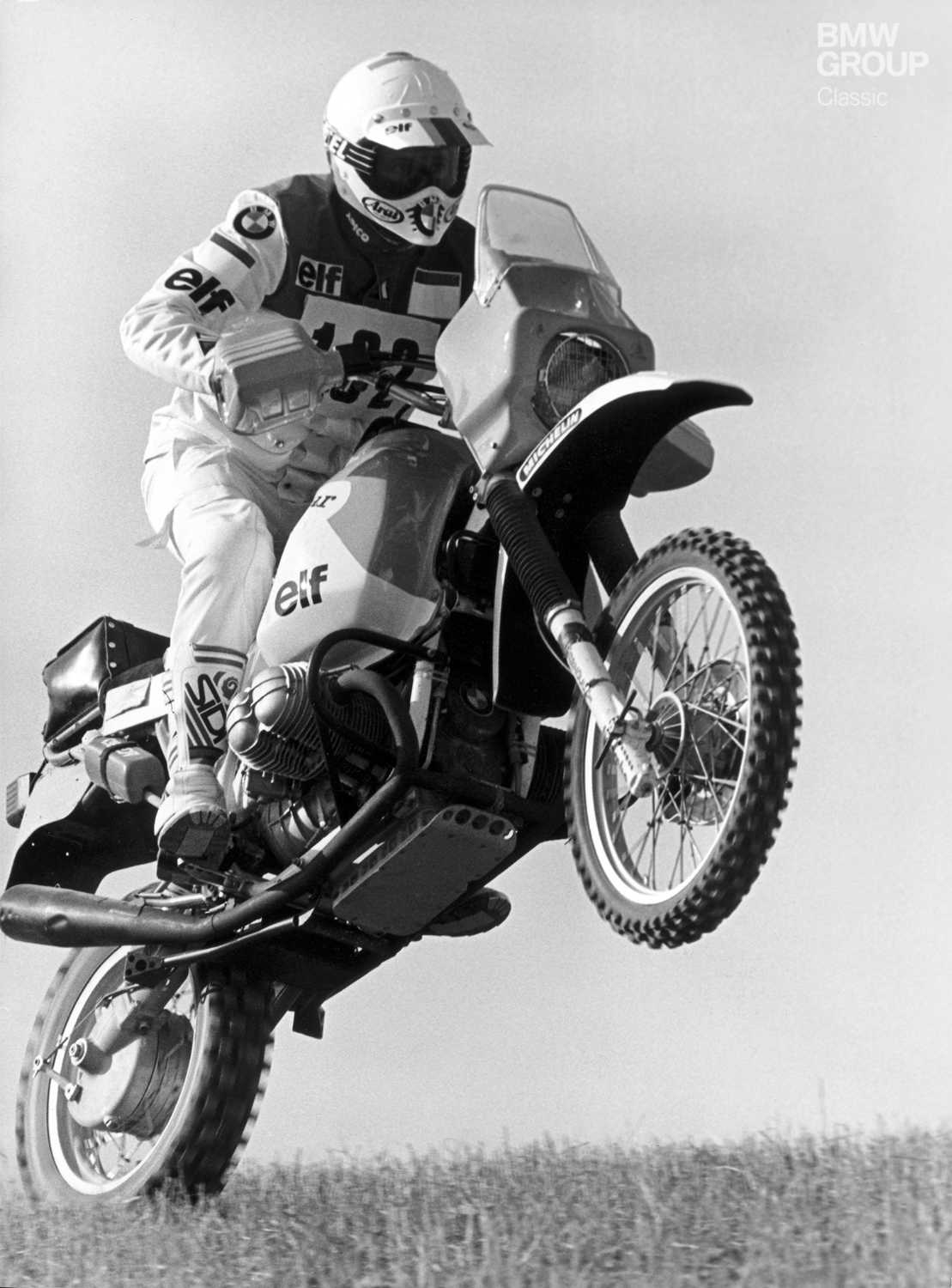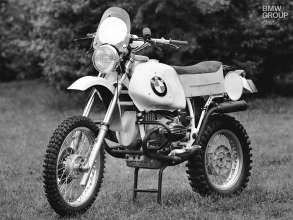Back in 1980, the BMW R 80 G/S was not only the company’s first enduro model, it was also the founder member of a whole new class. The original touring enduro was a bike for leisure-time enjoyment that didn’t need to be wrestled around and was a consummate performer in any environment. Tight city traffic, the open road and scenic tours over gravel and unsurfaced tracks were all part of its repertoire. The G/S was the ideal poster boy for a fresh new attitude to life. And it won the Paris-Dakar Rally at the first attempt.
In the 1970s, the world of motorcycles was emerging from a period of fundamental change. Now nobody rode a bike when they secretly dreamt of driving a car; motorcycles had themselves become the stuff of passion, something to enjoy and indulge in after clocking off from work. While youngsters were busy winding their 50cc scooters up into the rev stratosphere – driving their neighbours round the twist in the process – their fathers were wallowing in the comfort and ever-expanding dimensions of increasingly heavy and powerful luxury bikes. Those wishing to head off-road would plump for a tough old beast capable of soaking up any amount of punishment – and with a single-cylinder two-stroke engine that still rang in the ears several postcodes in the distance.
The motorcycle, rethought.
Into this established order sauntered a BMW that offered something very different. It was unlike any BMW before it – and, for that matter, any other bike on the market. The BMW R 80 G/S was lighter than a classical road machine and taller, too; it had a whiff of rufty-tufty off-road adventurer about it, yet its familiar boxer engine was magnificently sonorous. BMW’s marketeers serenaded customers still digesting the assault on their world view with talk of “a new freedom”. Road testers, meanwhile, declared themselves delighted with the new arrival, or at the very least mildly tickled. The new “touring enduro” category was born, and G/S – for “Gelände und Straße” (on- and off-road) – entered motorcycle parlance.
Desert storm.
French rally star (on two and four wheels) Hubert Auriol hustled the original 1981 G/S from France via Algiers and through the desert to claim overall victory in the motorcycle class of the legendary Paris-Dakar Rally. This sensational win paved the way for a string of subsequent BMW victories. As an advertisement for the G/S, the Dakar triumph was huge, and BMW’s new breed of motorcycle was suddenly the hottest ticket in town.
Proven engineering meets new ideas.
The 797cc engine developing 50 hp in the G/S was taken from the BMW R 80/7. But it wouldn’t have been a true BMW if the engineers hadn’t gone to work on a variety of key details. Among the optimisations to the engine were a stronger casing, an improved oil circuit and reduced centrifugal mass. It responded instantly to throttle movements, produced a hearty wave of torque and generated a brawny old sound, which still warms the soul to this today. Acceleration of 0 to 100 km/h (62 mph) in 5.6 seconds headlined the bike’s assured performance and top speed was around the 170 km/h (106 mph) mark, the exact figure dependent on the rider’s size and posture. But the G/S still weighed in at comfortably under 200 kg with a full tank of fuel, laying down another card its favour.
A G/S state of mind.
Small, twisty country roads were the natural habitat of the G/S, providing the perfect showcase for its distinctive character. The new BMW could be launched into corners with the minimum of fuss and muscle-power, made the most of its masterful suspension and allowed big lean angles despite its boxer engine. The bike’s low centre of gravity was a perfectly-conceived element of its design, while the Monolever single-sided swing arm with integrated driveshaft was specially redeveloped for the job at hand and laid on comfort in spades. The ST version introduced in 1982 was shod with road tyres, reflecting the desire of many customers to own a G/S but never venture off road. For these buyers, lugged tyres served little purpose.
Built in Berlin-Spandau, the G/S quickly became a frequent sight on the roads and built up a legion of fans. It first went on sale in 1980 priced at 8,290 marks, and by 1987 21,864 units had left the factory. Today, it continues to command a large following of enthusiasts and prices of mint-condition examples are buoyant. However, many of those with a G/S in their garage will never let it go, such is its allure for those impromptu mini-adventures.
